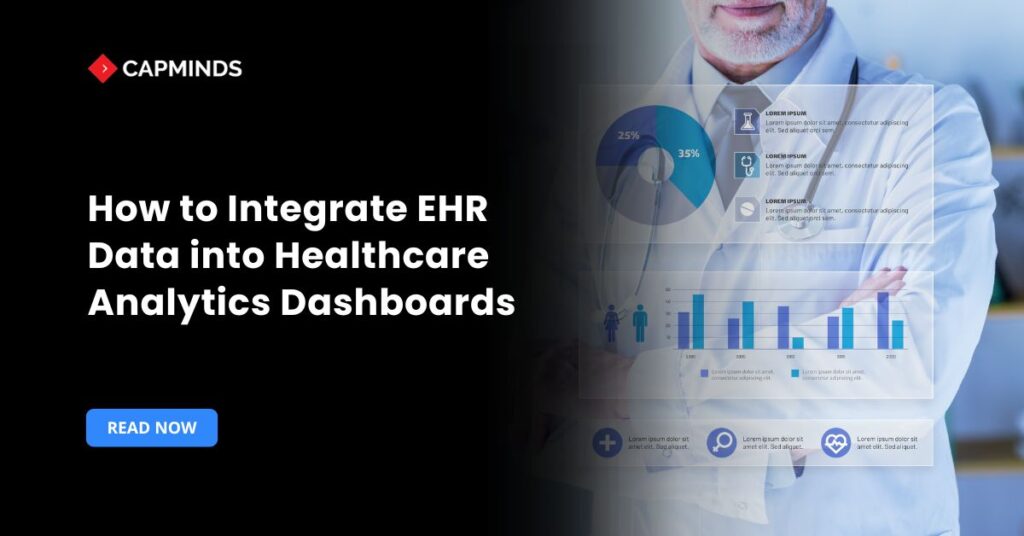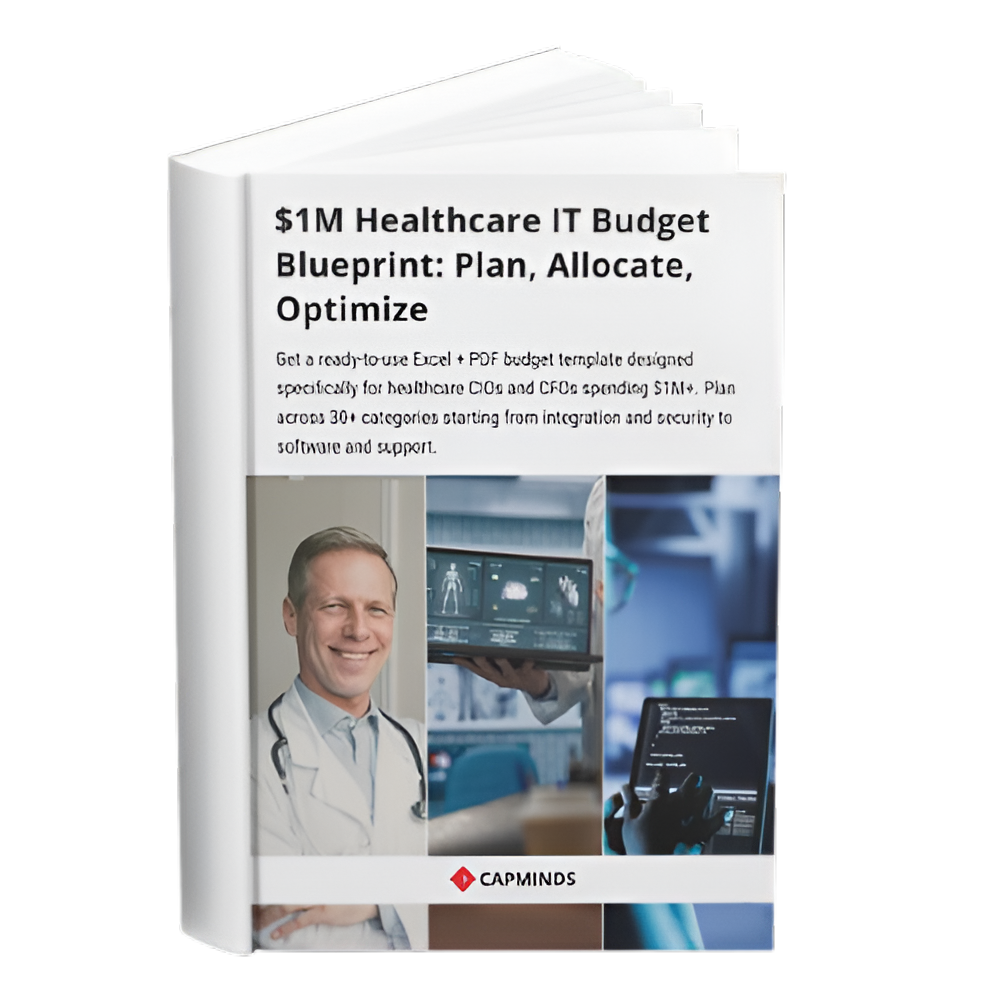How to Integrate EHR Data into Healthcare Analytics Dashboards
A digital health record interface is one example of how patient data can be integrated for analytics. Dashboards are only relevant when data from EHRs and related systems are merged into a single view. Integrating EHR data into analytics dashboards has the potential to transform decision-making by giving a full, real-time view of patient care and operations. EHRs usually remain in gaps without integration, creating “roadblocks for analytics, efficiency, and compliance.”
As a result, health leaders should approach EHR-data integration as a strategic initiative rather than a one-time IT project. A good plan establishes a solid data architecture, defines which data and use cases are critical, and ensures quality and governance. This method maximizes value in the clinical, financial, and operational areas while lowering costs and speeding up insights.
Key Pillars of Successful EHR Data Integration into Healthcare Analytics Dashboards
1. Strategic Planning and Data Strategy
The first step in any analytics program should be to align with organizational goals. Health IT directors need to set clear objectives and use cases before creating the dashboard. This entails inquiring:
- Which choices or quality indicators will this dashboard assist with?
- Which data sources—such as lab systems, supply-chain and financial systems, EHRs, etc. are required?
- Which reporting or compliance requirements, like HIPAA and public health reporting, must be fulfilled?
For example, if a dashboard of patient throughput and length of stay is a top objective for the business, merging EHR data with scheduling and clinical systems may be conceivable.
Early identification of these issues helps to minimize disconnected, “one-off” solutions. Without a clear framework, integration attempts risk misalignment, unnecessary work, and inadequate governance.
Establishing governance frameworks and generating a unified data model that meets analytics requirements are critical components of developing a data strategy. Standards for data definitions, security controls, and data access regulations should be jointly established by stakeholders from IT, clinical leadership, compliance, and operations. This cross-functional planning will allow the integrated data to support administrative and clinical decision-making.
A strong healthcare data governance system is required to improve patient outcomes and decision-making by ensuring that patient data is “accurate, consistent, secure, and compliant with regulations,” according to one expert. To assist executives in tracking progress and ROI, a dynamic roadmap with incremental milestones, pilot dashboards, and predicted benefits should be developed early.
2. Modern Data Architecture and Interoperability
Any integration effort is supported by a scalable and adaptable framework. A cloud-based or hybrid data platform, on the other hand, provides greater flexibility for analytics and easier interoperability; traditional on-premises solutions might fragment data and stymie projects. When EHR, financial, and operational data are consolidated in a single warehouse, commonly referred to as a “data lakehouse,” all users can query the same information.” Inconsistencies are removed, and downstream analysis is made easier by standardizing data formats at this layer. This repository can then be updated almost instantly by automated workflows. In order to provide prompt access to dispersed patient data across numerous locations and systems, healthcare organizations are actually utilizing cloud-native designs with APIs.
Using safe interfaces and industry standards is essential for interoperability. Integrators should utilize standard protocols and APIs when extracting data from EHRs and lab systems. This promotes consistent data exchange among systems. One design principle is to “consolidate data from multiple systems… relying on secure APIs and standardized protocols to merge information from EHRs and clinical systems”. Training the IT team on these standards is also a best practice. Adopting the FHIR standard, for example, allows systems to share clinical and patient data in a standardized format, guiding the creation of integration interfaces. Building on such open standards allows hospitals to avoid proprietary lock-in while also facilitating future expansion.
Related: Build vs. Buy: Choosing the Right Health Interoperability Engine for Your Organization
3. Automated Data Integration and Ingestion
Once the data sources and architecture have been established, the following step is to automate the data flow into analytics. Manual procedures are brittle and error-prone. Healthcare IT frequently inherits legacy connections that require regular manual intervention. In contrast, modern integration uses scalable pipelines and tools.
- For example, an Extract-Transform-Load or ELT process can automatically pull data from the EHR into the central repository, clean and transform it, and then load it for reporting.
- Automating these workflows eliminates many human errors: one study notes that manual EHR data exports are “time-consuming, resource-intensive, and error-prone,” leading to brittle solutions that “rarely scale”.
- Ideally, use pre-built connectors or integration accelerators when available.
- These solutions provide out-of-the-box interfaces to common healthcare systems, reducing custom development.
The goal is repeatable and reliable integration: “Traditional integrations often require heavy custom development… Solutions designed to be repeatable, reliable, and designed to scale will reduce the manual workload for IT teams”.
In practice, set up continuous data feeds so that the analytics database updates in near-real time or on regular schedules. Alongside ingestion, include data transformation to map disparate source fields into a consistent schema. For example, standardize patient identifiers and encounter IDs so data from different systems can join correctly in the dashboard layer.
4. Data Governance and Quality
Strong data governance is vital to ensure that integrated EHR data are trustworthy and useful. Governance provides the policies and processes that make data “accurate, consistent, secure, and compliant”. In healthcare, this entails creating data management responsibilities to supervise definitions and quality standards. Governance teams should create data dictionaries and a single data model to ensure that everyone utilizes the same meanings.
For example, a consistent data model ensures that “admission date” and “diagnosis code” have the same format and meaning across systems, reducing mismatches. Enforcing a single data model and immediately executing automatic quality checks ensures report accuracy and consistency.
Data quality controls are part of governance. Automated validation rules, de-duplication, and reconciliation procedures fall under this category. Anomalies can be detected early with regular data profiling. Governance guarantees “consistency of patient records, diagnostics, treatment histories, and outcomes across systems” in high-quality healthcare systems, which can greatly lower errors and enhance care coordination.
5. Security and Compliance
Integration efforts must give privacy and security first priority because healthcare data is extremely sensitive. It is not negotiable to comply with legislation such as GDPR (in Europe) or HIPAA (in the US). This includes strictly controlling who has access to what data and encrypting protected health information while in transit and at rest. Role-based access control on dashboards is a great practice since it ensures that each user only sees data relevant to their role. Executives only access aggregated metrics, although clinicians may view individual patient information. In order to support breach investigations or compliance audits, audit logging—which keeps track of who accessed what data and when- is also essential.
Organizational policies should be informed by legal requirements. As one guide notes, healthcare organizations must comply with “strict data privacy regulations such as HIPAA, HITECH, and HL7”. In practice, compliance teams should be involved early. Before any systems that transmit PHI are integrated, conduct security risk assessments. Ensure that data is stored and processed in accordance with encryption standards and that data residency regulations are fulfilled.
Compliance is incorporated into governance, which eliminates last-minute surprises. For example, the requirement that data reside inside a given geographic area may have an impact on cloud architecture considerations. Building a compliant analytics platform necessitates collaboration among IT security, legal, and clinical leaders at all stages.
Related: The Ultimate Checklist for Quality Measure Compliance in Your EHR
6. Designing User-Centric Dashboards
A successful analytics dashboard is only useful if its intended users adopt it. Thus, dashboard design must be user-centric and aligned to clinical workflows.
- Begin by identifying important stakeholders and interviewing them about the decisions they must make.
- Good practice is to allow customization: dashboards should align with users’ routines and let them filter or drill into data relevant to their department or patient population.
- As one UX guide notes, “user-centered design aligns with medical professionals’ workflows and allows customization,” which helps make complex data intuitive.
- Dashboards should simplify navigation by providing easy toggles between clinical and financial perspectives, as well as the opportunity to save bespoke reports, to reduce cognitive burden.
Clarity in visualization is also critical. Simple, consistent charts with clear labels help users quickly grasp insights. If at all possible, every dashboard panel should include a few critical indications to make important information easily visible.
- It is important to avoid excessive clutter, such as too complex graphics or needless data.
- Users may be able to investigate specifics as needed due to interactive elements.
- According to research, healthcare dashboards commonly display indicators directly connected to care quality, such as treatment adherence, readmission rates, and patient satisfaction.
- The dashboard will be more relevant and trustworthy if these parameters are prominently displayed and described in language that clinicians understand.
At the same time, the design must address security and regulatory considerations. This includes clear indicators of data currency and consent. Accessibility criteria should be examined to guarantee that all employees can use the products efficiently.
7. Phased Implementation and Continuous Improvement
Integrating EHR data is best done in phases. Trying to absorb all data feeds and create a monster dashboard at the same time might overload teams and cause delays. Prioritize high-value use cases with a gradual rollout. For example, create a pilot dashboard for a single service line and validate the data pipeline there. This “test-and-learn” approach allows teams to refine interfaces and fix issues on a smaller scale. As one integration blueprint advises, taking smaller incremental steps is often “the fastest, safest path to meaningful results”. Each phase should include metrics for success to demonstrate impact. Quick wins build momentum and secure leadership buy-in for subsequent phases.
Keep a cross-functional project team during implementation. Involve data stewards to identify data problems, get input from physicians and administrators on early dashboard iterations, and update the executive sponsors on developments. To ensure that end users comprehend the dashboards and have faith in the data, provide training and documentation.
Keep in mind that integration is a continuous effort rather than a one-time undertaking. Create a plan for upcoming improvements after the first dashboard is operational. Plans for introducing additional data sources and routine reviews of regulatory changes should be part of this.
- To verify data quality and prepare for new analytics requirements, the roadmap can, for instance, set up quarterly governance meetings.
- For IT and analytics personnel to stay up to date on technology and regulatory requirements, ongoing training is crucial.
- In this way, the integration framework can scale as the organization grows.
- As described by integration experts, a mature roadmap contains processes to “regularly review and update” for new requirements, onboard new partners and data sources, and train IT teams to manage and extend the system.
- This ensures the dashboards stay relevant and effective over time.
Unlock the Power of Integration with CapMinds Healthcare IT Services
Ready to turn your EHR data into powerful, actionable insights? At CapMinds, we deliver comprehensive digital health technology services tailored to the evolving needs of modern healthcare organizations.
Whether you’re looking to modernize your infrastructure, improve data-driven decisions, or streamline compliance, our service-first approach has you covered.
Our Key Services Include:
- End-to-End EHR Services: Implementation, customization, and optimization of your EHR systems for maximum data utility.
- Health Data Analytics Dashboards: Custom-designed dashboards that unify and visualize EHR, clinical, and operational data.
- Interoperability & Data Integration: Scalable and standards-based integration pipelines that ensure clean, secure, and real-time data exchange.
- Data Governance & Compliance Support: Embedded frameworks to meet HIPAA, HITECH, and other critical regulatory requirements.
Partner with CapMinds to create a future-proof, data-driven healthcare environment. Contact us today to elevate your analytics strategy with expert-led services that deliver measurable results.




